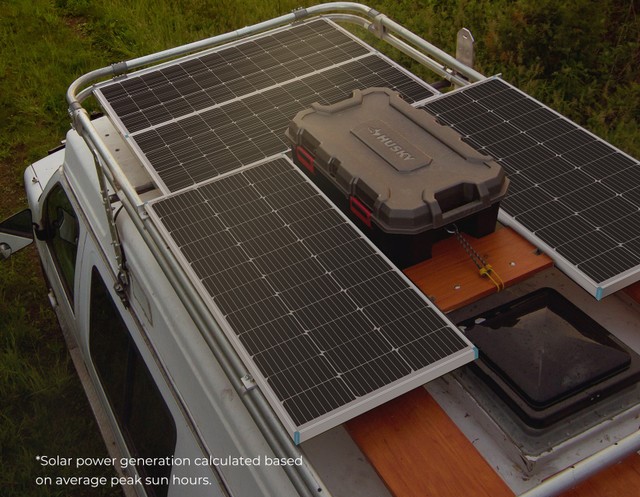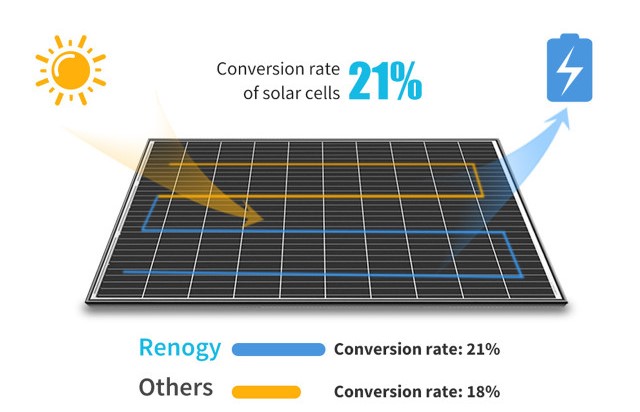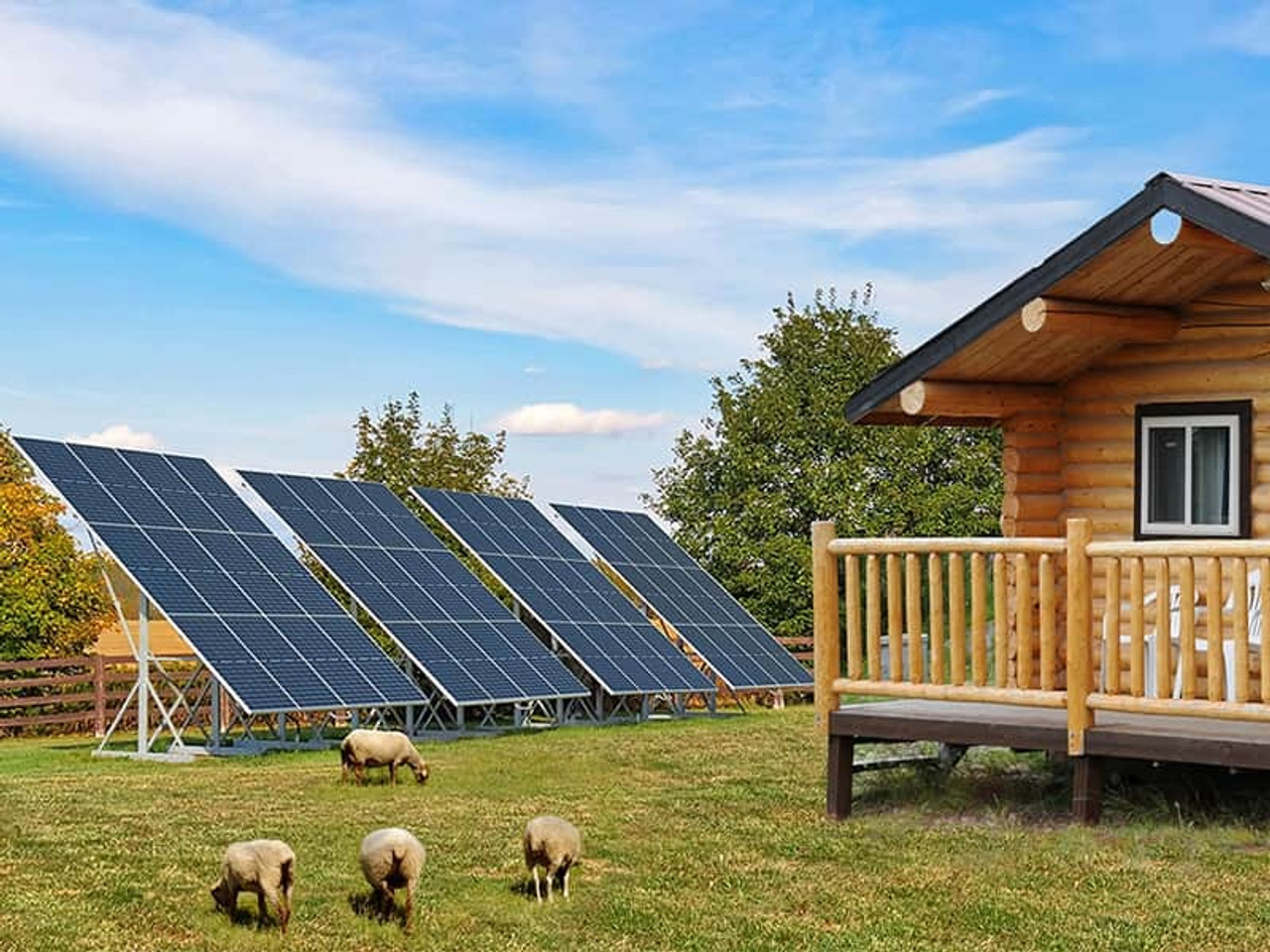What is a Solar Panel: A Beginner's Guide to Solar
The world's reliance on fossil fuels is unsustainable and damaging to the environment. Thankfully, renewable energy sources like solar provide a clean alternative. Solar panels lie at the heart of this energy revolution by converting the sun's rays into electricity through photovoltaic cells. This beginner's guide offers a comprehensive exploration into solar panel technology - explaining how they work, comparing different panel types, detailing installation methods, and highlighting the numerous benefits of generating your own solar power. Whether you're a homeowner, business, or just passionate about renewable energy, understanding solar panels is crucial for transitioning to a sustainable future powered by the abundance of nature.
What is a Solar Panel?
A solar panel is a device that converts sunlight directly into electricity through a process called the photovoltaic effect. It is composed of multiple solar cells, typically made of silicon, that are interconnected and encased in a protective material.

The basic component of a solar panel is the solar cell, which is a thin semiconductor wafer made of silicon. When sunlight hits the solar cell, it causes electrons to be knocked loose from the silicon atoms, creating an electrical current. This current is then captured and converted into usable electricity.
Solar panels are designed to be durable and weather-resistant, with a protective glass covering and an anti-reflective coating to maximize light absorption. They are typically mounted on rooftops or in open spaces, where they can receive optimal sunlight exposure.
While the photovoltaic effect was first observed in the 19th century, it wasn't until the 1950s that the first practical solar cells were developed at Bell Laboratories. Over the following decades, advancements in materials and manufacturing processes led to more efficient and cost-effective solar panels.
Today, solar panels are a rapidly growing source of renewable energy worldwide. They are used in a variety of applications, from small-scale residential systems to large-scale solar farms. Ongoing research and development continue to improve the efficiency, durability, and affordability of solar panels, making them an increasingly attractive option for meeting global energy demands while reducing our carbon footprint.
Types of Solar Panels
The solar panel market offers a variety of options to cater to different needs and preferences. From highly efficient monocrystalline panels to cost-effective polycrystalline and flexible thin-film solutions, the type of solar panel you choose can significantly impact the performance and economics of your solar energy system.
Monocrystalline Solar Panels
Monocrystalline solar panels are made from a single silicon crystal, making them highly efficient and able to generate more power per square foot. They have a distinctive uniform dark appearance and are known for their longevity and durability. However, they are also more expensive to manufacture.
Polycrystalline Solar Panels
Polycrystalline solar panels are made from multiple silicon crystals melted together. They have a speckled blue appearance and are slightly less efficient than monocrystalline panels. However, they are more cost-effective to produce, making them a popular choice for residential and commercial installations.
Thin-Film Solar Panels
Thin-film solar panels are made by depositing thin layers of photovoltaic materials, such as amorphous silicon, cadmium telluride, or copper indium gallium selenide (CIGS), onto a solid surface. They are lightweight, flexible, and can be integrated into building materials like roofs and walls. While less efficient than crystalline panels, they are inexpensive and suitable for applications where space is limited.
Bifacial Solar Panels
Bifacial solar panels are designed to absorb sunlight from both the front and back surfaces. They can capture reflected light from surfaces like rooftops or the ground, increasing their overall energy production. These panels are more expensive but can generate up to 30% more electricity than traditional monofacial panels in optimal conditions.
Each type of solar panel has its own advantages and disadvantages in terms of efficiency, cost, durability, and suitability for specific applications. Choosing the right type depends on factors such as available space, budget, and energy requirements.
How Do Solar Panels Work?
Solar panels work by converting sunlight into electricity through a process called the photovoltaic effect. This process occurs within the solar cells that make up the panel.
Each solar cell is made of semiconductor materials, typically silicon. When sunlight hits the solar cell, it causes electrons in the silicon to become dislodged and move freely, creating an electrical current.
The solar cells are designed with positive and negative layers that create an electrical field, forcing the freed electrons to flow in a specific direction and generate electricity.
Multiple solar cells are connected together and sealed within a protective casing to form a solar panel. This allows the individual currents from each cell to be combined and channeled into wires, where the electricity can then be used to power homes, businesses, or feed into the electrical grid.
To maximize efficiency, solar panels are tilted towards the sun and have an anti-reflective coating that helps capture as much sunlight as possible. They also have a tempered glass cover to protect the solar cells from the elements.
As long as sunlight is available, solar panels silently convert that light into renewable, emissions-free electricity, making them an increasingly popular choice for sustainable energy production.

Curious about how do solar panels work and harness the sun's energy? Explore the fascinating photovoltaic effect that allows these innovative devices to convert sunlight into electricity.
How to Install a Solar Panel

Installing a solar panel system involves several key steps to ensure optimal performance and safety. Here's an overview of the process:
- Site Evaluation: The first step is to assess your property and determine the best location for the solar panels. Factors like roof orientation, shade patterns, and local weather conditions are considered to maximize sun exposure.
- Mounting System: Depending on whether it's a roof or ground installation, the appropriate mounting system needs to be selected and installed. Roof mounts secure the panels firmly to the roof structure, while ground mounts use pole or frame systems.
- Electrical Wiring: The solar panels are wired together in series to create a solar array. These arrays are then connected to an inverter, which converts the direct current (DC) electricity produced by the panels into alternating current (AC) for home or grid use.
- Inverter Installation: The inverter is typically mounted near the main electrical service panel. It takes the DC power from the solar arrays and converts it to AC power that can be used by household appliances or fed into the utility grid.
- Electrical Integration: The solar system's AC output is connected to your home's electrical panel or utility meter base. This integration allows you to use the solar power directly or send excess electricity back to the grid.
- Inspection and Activation: Once the system is installed, it must be inspected by local authorities and the utility company to ensure compliance with safety codes and regulations. After passing inspection, the system can be activated and start generating clean, renewable energy.
Benefits of Solar Panels
Installing solar panels offers numerous benefits, making them an increasingly attractive choice for residential and commercial properties alike. Here are some of the key advantages of solar panels:
Environmental Benefits
Solar panels generate clean, renewable energy from the sun, reducing our reliance on fossil fuels and helping to combat climate change. They produce no greenhouse gas emissions or air pollutants, making them an environmentally friendly energy solution.
Cost Savings
While the initial cost of installing solar panels can be significant, they can provide substantial long-term savings on electricity bills. Once the system is paid off, the energy generated is essentially free, protecting you from rising utility rates.
Increased Property Value
Homes and businesses with solar panel installations often see an increase in property value. Potential buyers recognize the long-term cost savings and environmental benefits of solar energy.
Low Maintenance
Solar panels require minimal maintenance once installed. They have no moving parts and are designed to withstand harsh weather conditions, making them a reliable and hassle-free energy source.
Energy Independence
By generating your own electricity, you become less reliant on utility companies and fossil fuels. This increased energy independence can provide a sense of security and insulation from fluctuating energy prices.
Government Incentives
Many governments offer tax credits, rebates, or other incentives to encourage the adoption of solar energy. These incentives can significantly offset the initial cost of installing a solar panel system.
By harnessing the abundant energy from the sun, solar panels offer a sustainable, cost-effective, and environmentally responsible way to meet your energy needs while contributing to a cleaner, greener future.
How Much Do Solar Panles Cost?
The cost of solar panels can vary significantly depending on several factors, but understanding the typical price range can help you plan and budget for this renewable energy investment.
On average, residential solar panel systems in the United States cost between $15,000 and $25,000 for a standard 6 kilowatt (kW) system before applying any tax credits or incentives. This translates to a cost of roughly $2.50 to $4.17 per watt of installed capacity.
The primary factors influencing the cost include:
- System size: Larger systems with more solar panels generally cost more upfront but can generate more electricity, leading to greater long-term savings.
- Solar panel type: High-efficiency monocrystalline panels are more expensive than polycrystalline or thin-film panels.
- Installation complexity: Factors like roof type, tilt, and shading can affect installation difficulty and labor costs.
- Location: Costs can vary based on local labor rates, permitting fees, and incentives offered in your area.
It's important to note that while the upfront cost may seem high, solar panels can save you money in the long run by reducing or eliminating your electricity bills. Additionally, various tax credits, rebates, and incentives can significantly offset the initial investment.
To get an accurate estimate for your specific situation, it's best to consult with local solar installers who can evaluate your energy needs and provide a detailed quote tailored to your home or business.
Conclusion
Solar panels harness the power of the sun to generate clean, renewable electricity. From understanding their working principles and types, to installation and numerous benefits, this guide has provided a comprehensive overview of solar panel technology. Whether residential or commercial, solar panels offer long-term cost savings, reduced carbon footprint, and increased energy independence. With continuous advancements and improving affordability, now is an opportune time to explore solar energy solutions from reputable providers like Renogy.
Consult solar professionals to determine the best system for your needs. Embrace this sustainable energy source to benefit your finances while contributing to a greener future for generations to come.
FAQs
1. How long do solar panels last?
Most solar panels are designed to last 25-30 years while still producing electricity efficiently. However, their output does gradually decrease over time due to factors like weathering and heat exposure. With proper maintenance and favorable conditions, some solar panels can even continue operating for 40 years or more before needing replacement. The longevity of solar panels is one of their key advantages, allowing homeowners and businesses to enjoy decades of clean, renewable energy from a single installation. Understanding how long solar panels last can help in planning and maximizing the return on investment for solar energy systems.
2. Do solar panels work on cloudy days?
Yes, solar panels can still generate electricity on cloudy or overcast days, just at a reduced output compared to sunny conditions. This is because solar panels are able to capture energy from indirect or diffuse sunlight, not just direct sunlight. If you're wondering, "Do solar panels work on cloudy days?" the answer is yes, but the amount of electricity produced will be significantly lower on very cloudy days. Rain actually helps to keep solar panels operating efficiently by washing away dust and dirt that can accumulate on the surface. While cloudy weather impacts solar production, modern solar systems with battery storage can help store energy captured on sunnier days for use during inclement weather.











